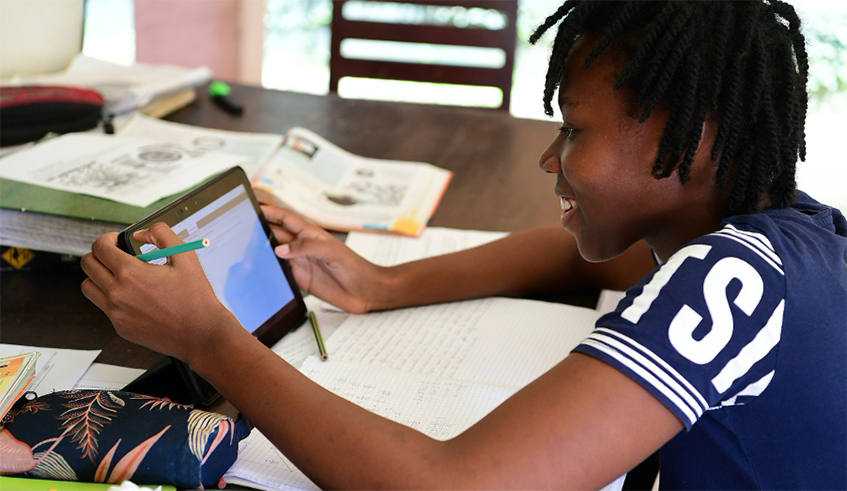

A survey commissioned by Rwanda Education Board (REB) has recommended adjustments that could ensure the effectiveness of remote learning, teaching, and assessment.
The recommendation follows a survey that was conducted in two urban and five rural districts namely Nyarugenge and Huye, Kirehe, Burera, Nyaruguru, Rutsiro, and Nyabihu.
It aimed to assess the online mode of teaching, learning, and assessment that was used last year during lockdown.
The survey considered a total of 799 learners of whom 400 were from primary schools and 399 from lower secondary from a population of 2,511,384 and 481,043 for primary and secondary schools respectively.
The study also involved 115 parents, 115 teachers, and seven district directors of education, seven district education offices, 46 executive secretaries of cells, 23 sector education officers, eight learners with disabilities, and one senior official from Rwanda Education Board.
It found that while close to 60 per cent of all learners listened to the lessons via ‘radio in general’, less than 15 per cent of all learners followed lessons via YouTube.
Close to 50 per cent of learners followed the lessons using ‘telephone with radio’, it shows.
The survey findings show that while 67 per cent of households have TV sets in the urban areas, the number is lower at 36 per cent of households in the rural areas, meaning that combined, 50 per cent of learners used TV sets.
The majority of the learners from families with TV sets followed lessons on TV, the study states.
Regarding the support provided to learners, much of it was provided by either parents or other persons in the family.
The support included reminding learners about the time of lessons through the provision of space and time, checking exercises, monitoring the equipment used, allowing learners to use the parents or guardians’ phones and encouraging learners to continue activities related to the lesson after watching or listening.
Recommendations
The study has recommended that lessons should be aired in the evening and weekend hours to attract more viewers and listeners and support from a variety of individuals in the household.
While some parents did not want to handle the equipment in their absence, a good number of learners could follow the lessons on their parents’ gadgets which are only available when they are at home,” it explains.
It recommends putting in place a target assistance programme to facilitate learners with disabilities acquire the required gadgets, and develop support persons at local levels to support them at the time of airing lessons.
"Review of the length of lesson period, and rebroadcast lessons as an additional strategy to fostering the acquisition of aired contents and reaching out of lessons to the maximum number of learners for the maximisation of understanding of contents of aired lessons was also recommended.
The study further recommends a mechanism to facilitate interaction between learners and instructors so that learners can ask for clarification or help from the instructors when they get challenged.
Airing as many lessons as possible with radio could increase access to lessons by lower secondary learners, while developing software that prevents incoming calls and access to non-lesson related activities during viewership and listenership is also needed.
The survey says there is need for initiating a national targeted mobilisation of learners and parents to up the level of awareness about the remote teaching and learning programme and a continuous reminder through various media, such as short text messages, radio and television, and events such as meetings at local levels.


